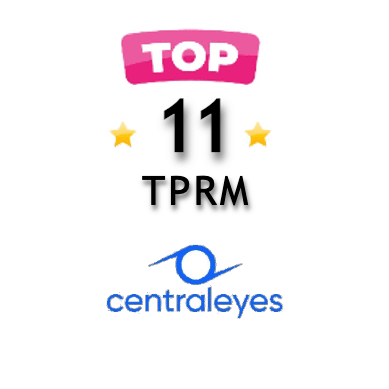Decision-makers often grapple with the challenge of seeing cybersecurity not merely as a protective measure but as a revenue-generating asset. The intangible nature of cybersecurity measures adds complexity to this perception, making it challenging to quantify the immediate financial returns. This difficulty in envisioning security as a business enabler contributes to the deprioritization of robust cybersecurity initiatives.
Compounded by the struggle to justify the financial commitment to traditional on-site compliance teams, decision-makers find themselves in a delicate balancing act. Virtual compliance teams step in in this scenario, offering a transformative solution that aligns cybersecurity needs with budgetary constraints.

Challenges Faced by Cybersecurity Professionals
According to the recently released report “The Life and Times of Cybersecurity Professionals” by Enterprise Strategy Group (ESG) and the Information Systems Security Association (ISSA), the difficulties encountered by cybersecurity experts are on the rise, impacting job satisfaction and contributing to a concerning trend of professionals considering leaving the field.
Challenges such as the escalating complexity of cyber threats, persistent staffing shortages, tight budget constraints, and the ever-evolving maze of compliance requirements contribute to a landscape where 63% of cybersecurity professionals believe their work has become more challenging over the past two years. A mere 44% express being “very satisfied” with their jobs, while a disconcerting 50% contemplate leaving their current positions by 2023.
Let’s explore some of the main challenges facing the compliance world today.
Growing Complexity
- As cyber threats evolve, the tasks assigned to cybersecurity professionals become increasingly intricate. The complexity stems from the constant development of new attack vectors, malware, and tactics employed by cybercriminals. For example, the rise of sophisticated phishing campaigns, ransomware attacks, and zero-day vulnerabilities requires cybersecurity experts to stay abreast of the latest threats. This evolving complexity demands continuous skill development and necessitates implementing advanced tools and technologies to effectively detect and mitigate emerging threats.
Staffing Shortages
- Understaffing in cybersecurity teams results in overburdened professionals struggling to keep up with the sheer volume of security incidents. This shortage affects incident response times and places immense pressure on existing team members. Inadequate staffing can lead to burnout, increased turnover rates, and compromises in the overall effectiveness of the cybersecurity strategy. Organizations must recognize the importance of investing in talent acquisition and retention strategies to ensure a well-staffed, resilient cybersecurity workforce.
Budget Constraints
- Tight budgets present a formidable obstacle in the pursuit of robust cybersecurity measures. Limited financial resources hinder the acquisition of advanced cybersecurity tools, threat intelligence services, and the implementation of comprehensive training programs. This constraint extends beyond technology, affecting the ability to hire skilled professionals, conduct regular security audits, and invest in proactive cybersecurity measures. Organizations must adopt a strategic approach to budget allocation, prioritizing investments that address the most critical vulnerabilities and align with the organization’s risk appetite.
Compliance Requirements
- Navigating the ever-expanding landscape of regulatory and compliance requirements is a multifaceted challenge. Cybersecurity professionals must contend with many regulations, such as GDPR, HIPAA, and industry-specific standards. The need for continuous adaptation to changes in legislation and emerging compliance frameworks further compounds the complexity. Failure to meet these compliance standards exposes organizations to legal repercussions and tarnishes their reputation. Cybersecurity teams must develop agile virtual compliance management strategies, leveraging technology and collaboration to ensure adherence while adapting to evolving regulatory landscapes.
Amidst this disheartening backdrop, Virtual Corporate Compliance Officers (VCOs) offer tremendous potential to reshape the narrative of security and compliance.
Strategies for Compliance Risk Mitigation
Skill Development Programs
Organizations should invest in comprehensive skill development programs for cybersecurity professionals to address the growing complexity of cyber threats. This includes regular virtual compliance training sessions, certifications, and simulated exercises to enhance their ability to combat sophisticated threats.
Talent Acquisition and Retention
Organizations should recognize the significance of staffing and implement robust talent acquisition and retention strategies. This may involve competitive compensation packages, flexible work arrangements, and professional development opportunities to attract and retain skilled cybersecurity professionals.
Strategic Budget Allocation
Adopting a strategic approach to budget allocation involves identifying the most critical cybersecurity needs and allocating resources accordingly. Organizations should prioritize investments in advanced threat detection and response capabilities, employee training, and regular security assessments to maximize the impact of limited financial resources.
Integrated Compliance Management
Implementing integrated compliance management systems can streamline adhering to regulatory requirements. Automation tools can help cybersecurity teams track regulation changes, conduct regular compliance assessments, and generate reports demonstrating adherence. This proactive approach ensures continuous compliance in the face of evolving regulatory landscapes.
The Rise of Virtual Compliance Officers:
Virtual Compliance Officers represent a groundbreaking solution to the challenges faced by cybersecurity professionals. In a world where cyber threats constantly evolve, and traditional approaches struggle to keep pace, VCOs provide a digital lifeline. Operating in a remote or decentralized environment, these virtual teams are poised to revolutionize how organizations approach compliance and security.
Start Getting Value With
Centraleyes for Free
See for yourself how the Centraleyes platform exceeds anything an old GRC
system does and eliminates the need for manual processes and spreadsheets
to give you immediate value and run a full risk assessment in less than 30 days
What is a Compliance Officer?
A compliance officer is a corporate executive responsible for overseeing and managing regulatory compliance issues within an organization. The chief compliance officer (CCO) reports to the chief executive or legal officer. The primary responsibilities of a compliance officer include:
- Leading Enterprise Compliance Efforts: The CCO leads efforts to ensure that the organization complies with applicable local, state, and federal laws, as well as third-party guidelines.
- Designing and Implementing Internal Controls: The CCO is responsible for designing and implementing internal controls, policies, and procedures to ensure compliance with relevant laws and regulations.
- Managing Audits and Investigations: The CCO manages audits and investigations into regulatory and compliance issues to identify and address potential violations.
- Responding to Regulatory Requests: Compliance officers respond to requests for information from regulatory bodies, facilitating communication and cooperation with external authorities.
- Promoting a Culture of Compliance: They foster a culture of compliance and ethical behavior within the organization, ensuring that employees understand and adhere to the established regulations and guidelines.
Regarding education and certification, certified compliance officers generally have a background in law, finance, or a related field. Common certifications for compliance professionals include Certified Compliance and Ethics Professional (CCEP), Certified Anti-Money Laundering Specialist (CAMS), Certified Fraud Examiner (CFE), and Certified Information Systems Auditor (CISA).
Moreover, in various jurisdictions worldwide, the appointment of compliance officers is mandated by regulations. For instance, the Bank Secrecy Act requires certain financial institutions to designate a Compliance Officer for Anti-Money Laundering (AML) programs in the United States. In the European Union, the Fourth Anti-Money Laundering Directive stipulates the appointment of Compliance Officers for organizations subject to AML and Counter-Terrorist Financing (CTF) requirements.
What is a Virtual Compliance Officer?
A virtual compliance officer performs similar roles and responsibilities as a traditional compliance officer but does so in a digital or remote environment. The necessity for virtual compliance officers arises when organizations operate in a decentralized or geographically dispersed manner, making it challenging for a centralized physical presence.
The role of a virtual compliance officer becomes crucial in situations such as:
- Global Operations: Organizations with a global footprint may find it more practical to have virtual compliance officers who can monitor and manage compliance across various jurisdictions without needing a physical presence.
- Remote Work Environments: The rise of remote work has made it essential to have compliance officers who can effectively oversee and manage compliance activities in a virtual setting.
- Digital Transactions and Operations: With the increasing digitization of business processes, virtual compliance officers play a key role in ensuring that digital transactions and operations comply with relevant regulations.
- Decentralized Organizations: Companies with decentralized structures or those relying heavily on digital platforms may benefit from virtual compliance officers who can navigate the complexities of compliance in a digital landscape.
Benefits of Virtual Compliance Officers
Quantifiable Benefits Beyond Compliance
Virtual Compliance Teams bring quantifiable benefits that extend beyond regulatory compliance. By leveraging their expertise, organizations can avert the financial devastation of data breaches, safeguard customer trust, and ensure operational continuity. These tangible outcomes position cybersecurity as a proactive and indispensable element of a resilient business strategy.
Cost-Effective Solutions for Modern Challenges:
The shortage of skilled cybersecurity professionals compounds the challenge of fully implementing robust security programs. Virtual Compliance Teams offer a cost-effective solution, providing senior professionals who can build, implement, and manage information security programs contractually. This flexible approach ensures organizations get the expertise they need without the burden of a full-time commitment.
Navigating Regulatory Landscapes:
In an era of ever-expanding regulatory landscapes, compliance is not just a checkbox exercise but a strategic imperative. Virtual Compliance Teams excel in navigating the complexities of regulatory requirements, ensuring that organizations meet minimum standards and proactively address emerging threats and legal obligations.
Embracing a Cyber-Resilient Future
The time has come for decision-makers to view cybersecurity strategically. Virtual Compliance Teams offer a pathway to transform cybersecurity from a perceived cost center to a strategic business enabler. By recognizing the quantifiable benefits, cost-effective solutions, and strategic insights that Virtual Compliance Teams bring, organizations can pave the way for a cyber-resilient future. As the business landscape evolves, embracing cybersecurity as an integral part of business strategy and a competitive advantage in a digitally driven world becomes necessary.
Start Getting Value With
Centraleyes for Free
See for yourself how the Centraleyes platform exceeds anything an old GRC
system does and eliminates the need for manual processes and spreadsheets
to give you immediate value and run a full risk assessment in less than 30 days






